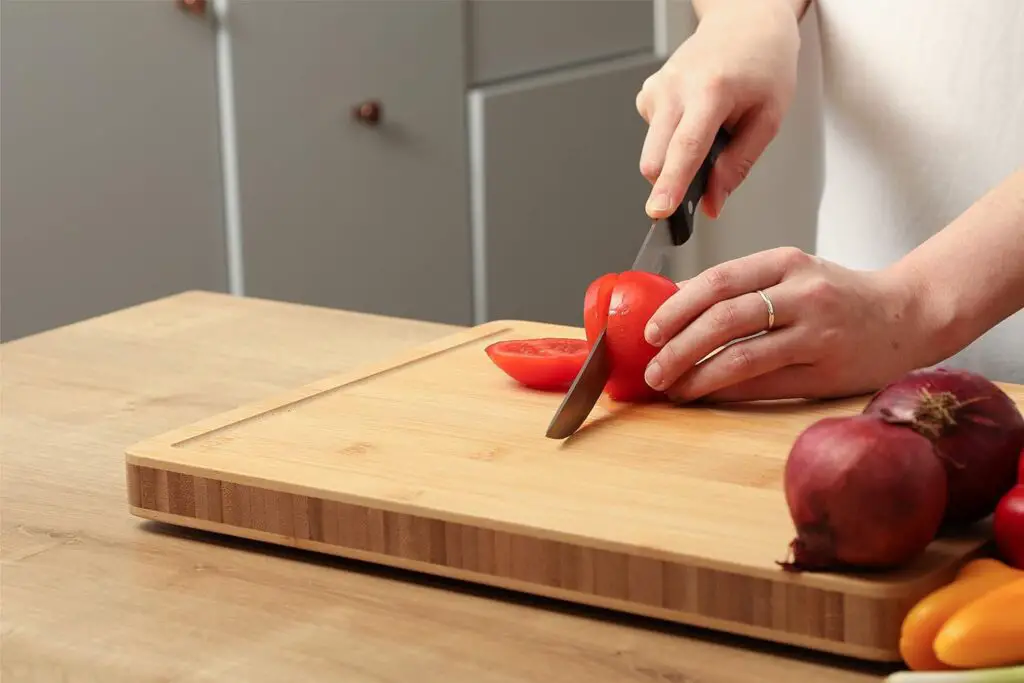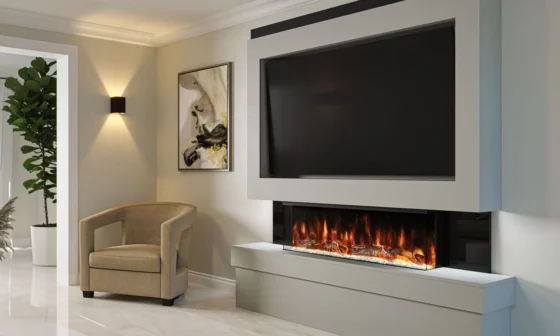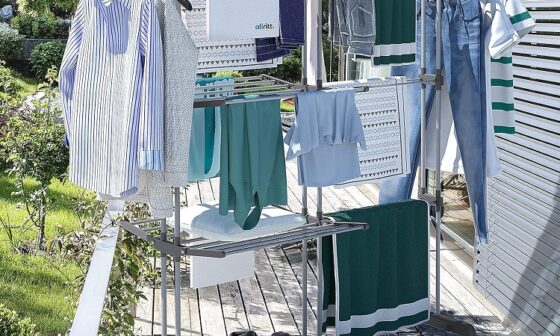This page contains affiliate links, meaning we may earn a small commission if you make a purchase through these links. Learn More

In the heart of every kitchen, a sturdy and reliable chopping board is an unsung hero. When it comes to choosing the best thick wooden chopping boards, the right selection can make a world of difference in your culinary adventures.
The Characteristics of the Best Thick Wooden Chopping Boards
-
Thickness: A thicker board is more durable and provides a stable surface for chopping.
-
Wood Type: Opt for hardwoods like maple, walnut, or cherry for their durability and attractive appearance.
-
Size: Consider your kitchen space and cutting needs. A larger board provides more working space.
-
Maintenance: Wooden boards require regular oiling to maintain their integrity.
-
End Grain vs. Edge Grain: End grain boards are gentler on knives, while edge grain boards are more affordable.
Best thick wooden chopping boards
Key Features
- 40 x 30 centimeters
- 3cm thickness
- Natural wood and bamboo materials
- Versatile rectangular shape
- Built-in handles for ease of use
- Eco-friendly and sustainable
- Non-slip feet for stability
- Integrated groove for cleanliness
- Gift box packaging included
Key Features
- Thickness: 4cm (40mm)
- Dimensions: 45 x 30cm
- Crafted from Solid European Oak
- Rustins Danish Oil Finish
- Rounded Edges for Easy Handling
- 6mm Pencil-Edged Top and Bottom
- Durable and Long-Lasting
Key Features
- Crafted from beautiful and durable Acacia wood
- 4cm thickness
- Features a built-in drip groove to prevent spills
- Convenient finger grip holds for easy handling
- Multipurpose: suitable for chopping, carving, and serving
- Eco-friendly and sustainably sourced Acacia wood
- 1-year warranty and a 30-day money-back guarantee
Key Features
- Solid teak wood construction
- 3.8cm thickness
- Natural conditioning with beeswax, linseed, and lemon oil
- BPA, phthalates, and petroleum-based mineral oil-free
- Built-in juice-collecting groove
- Gift box included
- Sustainable, 100% recyclable, and plastic-free packaging
- 43L x 28W cm
- Ideal for slicing and serving
Key Features
- 61L x 40W
- 3.2 cm thickness
- Sturdy Bamboo Wood
- Ideal for fruit, fish, cheese, vegetables, bread, and meat
- Prevents spills and keeps your countertop clean
- Resists stains and odours, with simple hand wash care
- Built-In Handle For easy transport and serving
are wooden chopping boards antibacterial?
Wooden chopping boards are not inherently antibacterial, but they do have some natural properties that can make them less hospitable to bacteria compared to other materials like plastic.
Here are a few reasons why wooden chopping boards can be considered relatively antibacterial:
-
Porosity: Wood is a porous material, which means that moisture from foods can be absorbed into the wood. This helps to draw bacteria away from the surface where they can’t multiply as quickly.
-
Tannins: Some woods, like oak, bamboo wood, and walnut, contain natural compounds like tannins that have antibacterial properties. These can help inhibit the growth of bacteria on the surface of the wood.
-
Self-healing properties: Wooden chopping boards can develop shallow cuts and grooves over time as you use them. These cuts may close up due to the natural elasticity of the wood, potentially trapping and eliminating bacteria within the board.
how to clean wooden chopping boards?
Cleaning wooden chopping boards is a straightforward process, and it’s essential to maintain their hygiene. Here’s a step-by-step guide on how to clean wooden chopping boards:
-
Preparation: Remove any food debris or residue from the chopping board. You can use a spatula or the edge of a knife to scrape off larger food particles.
-
Rinse with Hot Water: Rinse the board with hot water to remove loose debris and surface dirt. This also helps open the wood’s pores for better cleaning.
-
Wash with Mild Soap: Apply a small amount of mild dish soap to the board’s surface. Using a scrub brush or sponge, gently scrub the entire surface of the chopping board. Be sure to pay extra attention to any areas with visible stains or odours.
-
Rinse Thoroughly: Rinse the board with hot water to remove all soap residue. Ensure that you rinse it well, so no soap is left behind.
-
Sanitize (Optional): To further disinfect the board, you can apply a diluted solution of white vinegar or hydrogen peroxide. Simply pour a small amount over the board and spread it around. Leave it on for a few minutes, then rinse thoroughly with hot water.
-
Dry Completely: Pat the chopping board dry with a clean towel or paper towels. Ensure that it’s completely dry to prevent moisture from remaining on the board, which could lead to mould growth.
-
Apply Oil (Maintenance): To maintain the wooden chopping board and keep it from drying out, apply a food-safe mineral oil or cutting board oil. Apply a thin, even coat of oil to the entire surface and let it soak in for a few hours or overnight. Wipe off any excess oil with a clean, dry cloth.
Can I put a wooden chopping board in the dishwasher?
No, it’s not advisable to put a wooden chopping board in the dishwasher. The high water temperature and intense agitation in dishwashers can cause warping and cracking of the wooden board
Is it better to use wood or plastic cutting boards?
When it comes to choosing between wood and plastic cutting boards, many culinary experts prefer wood due to its knife-friendly nature, preventing rapid dulling and possessing natural antibacterial properties.
While plastic cutting boards are a popular choice for their easy maintenance and dishwasher compatibility, wooden cutting boards remain the top pick for many experts.







